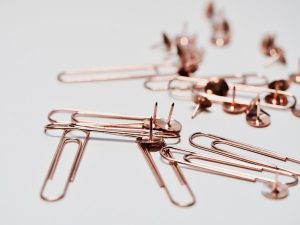Tips
Understanding Dowel Pins: A Comprehensive Guide
Dowel pins are small cylindrical rods, usually made of wood, metal, or plastic, that serve a vital role in the alignment and joining of components in both woodworking and mechanical engineering applications. Despite their simplicity, dowel pins are critical for ensuring precision and stability in various constructions and assemblies. This article provides an in-depth look at what dowel pins are, their characteristics, uses, and installation methods.
What Are Dowel Pins?
A dowel pin is a solid cylindrical rod designed to fit into corresponding holes in different parts or materials to align, secure, or hold them together. They act as a non-threaded, friction-fit fastener or alignment tool. The key characteristics of dowel pins include their uniform diameter, smooth surface, and their ability to provide precise alignment between components.
Types of Dowel Pins
Dowel pins come in various types and are typically categorized based on the material they’re made from and their intended application:
- Wooden Dowel Pins:
- Description: Made from hardwoods like birch, maple, or beech, wooden dowel pins are commonly used in woodworking.
- Applications: These are used to join wooden pieces together in furniture making, cabinetry, and other woodworking projects. They help to create strong, invisible joints without the use of screws or nails.
- Metal Dowel Pins:
- Description: Typically made from steel, stainless steel, brass, or aluminum, metal dowel pins are used in applications that require higher strength and precision.
- Applications: They’re used in mechanical engineering, automotive industries, aerospace, and manufacturing for precise alignment and to hold parts securely during machining and assembly processes.
- Plastic Dowel Pins:
- Description: Made from various plastics, these pins are lightweight and resistant to corrosion. Common materials include nylon and acetal.
- Applications: Used in electronics, appliances, and in environments where corrosion resistance is crucial, plastic dowel pins are non-conductive and ideal for electrical insulation.
Uses of Dowel Pins
Dowel pins serve multiple purposes across various industries and applications:
- Alignment
- One of the primary functions of dowel pins is to align two or more components accurately. In mechanical assemblies, this is crucial to maintain precise positioning and functionality, such as in automotive and aerospace industries.
- Joining and Fastening
- In woodworking, dowel pins are commonly used to join pieces of wood, creating strong, reliable joints. They’re often used in furniture making, cabinetry, and frame construction.
- Locating
- Dowel pins are used as locating pins in manufacturing to position parts accurately for machining, drilling, or assembly. They help to ensure that components fit together correctly.
- Strengthening Joints
- Adding dowel pins to joints increases their strength and durability. This is particularly important in load-bearing applications where stability is essential.
- Temporary Fastening:
- In some assembly processes, dowel pins are used temporarily to hold parts together while other fasteners or adhesives are applied. This allows for easy disassembly and reassembly.
Conclusion
Dowel pins may seem like simple components, but they play a crucial role in both woodworking and engineering by providing precision alignment, strength, and ease of assembly. Whether used for joining wooden furniture pieces or aligning high-precision machine components, dowel pins are an essential tool in ensuring that structures and assemblies are strong, stable, and reliable. Understanding the types, characteristics, and uses of dowel pins can help you make informed choices in your projects, ensuring optimal results and performance.






